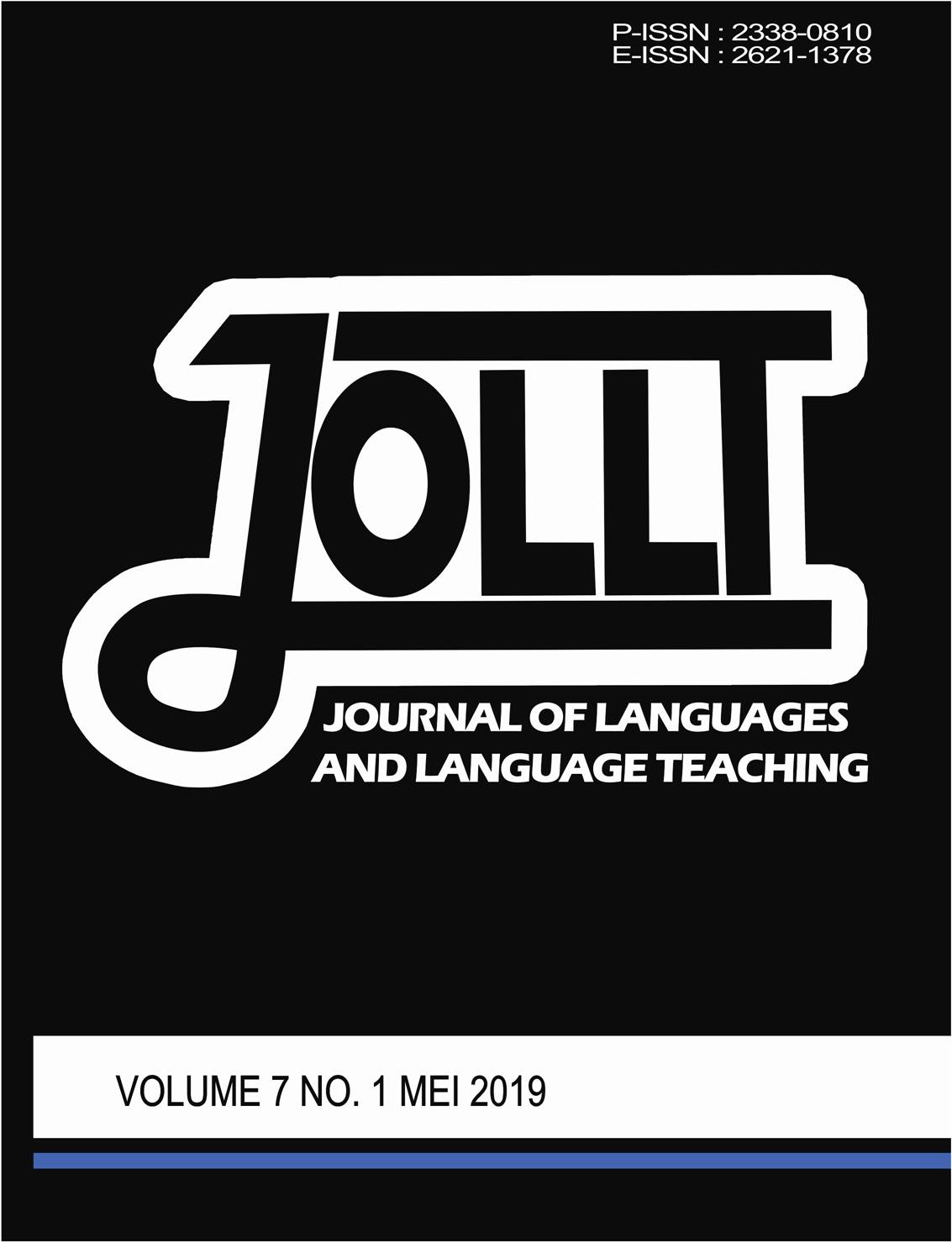AN ANALYSIS ON TEACHER’S COMMUNICATION STRATEGIES IN TEACHING SPEAKING AT MTS NW BONJERUK
DOI:
https://doi.org/10.33394/jollt.v7i2.1963Keywords:
Communication Strategies & SpeakingAbstract
References
Bialystok, E. 1990. Communication Strategies: A Psychological Analysis of second-language Use. Oxford: Basil Blackwell.
Brown, H.D. 2001. Principles of Language Learning and Teaching. San Francisco: Addison Wesley Longman, Inc.. 2004. Language Assessment Principles and Classroom Practices. New York: Pearson Education, Inc.
Celce Murcia, et al.1995. communicative compelence: A pendagogically motivated model with konten Spesifications, california; regent of the university of california.
Effendi, A. (2018). The effectiveness of fishbowl technique towards students’ self efficacy in speaking. JOLLT Journal of Languages and Language Teaching, 5(2), 46-51. https://doi.org/10.33394/jollt.v5i2.345
Harmer Jeremy. 2001. The Practice of English Language Teaching. London: Longman.
Hughes Arthur. 2003. Testing for Language Teacher. Cambridge: Cambridge University Press.
Levelt, W.J.M. 1989. Speaking, From Intention to Articulation. London: The MIT Press.
Levine, D.M & Stephan, D.F. 2005. Even You Can Learn Statistic. United State of America: Pearson Practice Hall.
Louma, Sari. 2004. Assessing Speaking. Cambridge: Cambridge University Press.
Miles, M.B, Humbermen, A.M, 1994. Qualitative data analysis, Qualitative data analysis, 2nd ed. USA: sage publication.
Richards, J. C. 2008. Teaching Listening and Speaking: From Theory to Practice. New York: Cambridge University Press.
Singh, K.Y. 2006. Fundamental of Research Methodology and Statistics. New Delhi: New Age International.
Sugiyono. 2010. Metode Penelitian Kualitatif & RND. Bandung: Albabeta.
Syahbandi, L. (2018). The effect of brain-based learning toward students’ speaking skills. JOLLT Journal of Languages and Language Teaching, 5(2), 52-56. https://doi.org/10.33394/jollt.v5i2.349
Tarone, E. (1980). Communication Strategies, Foreigner Talks, and Repair in Interlanguage. Language Learning.
Tarone, E. & Yule, G. (1984). Communication strategies in East-West interactions. In L.E. Smith (Ed.), Discourse across cultures: Strategies in World Englishes (pp. 49-65). New York: Prentice-Hall.
Thornbury Scott. 2005. How to Teach Speaking. New York: Pearson Education Limited.
Downloads
Published
How to Cite
Issue
Section
Citation Check
License
License and Publishing Agreement
In submitting the manuscript to the journal, the authors certify that:
- They are authorized by their co-authors to enter into these arrangements.
- The work described has not been formally published before, except in the form of an abstract or as part of a published lecture, review, thesis, or overlay journal.
- That it is not under consideration for publication elsewhere,
- That its publication has been approved by all the author(s) and by the responsible authorities – tacitly or explicitly – of the institutes where the work has been carried out.
- They secure the right to reproduce any material that has already been published or copyrighted elsewhere.
- They agree to the following license and publishing agreement.
Copyright
Authors who publish with JOLLT Journal of Languages and Language Teaching agree to the following terms:
- Authors retain copyright and grant the journal right of first publication with the work simultaneously licensed under a Creative Commons Attribution License (CC BY-SA 4.0) that allows others to share the work with an acknowledgment of the work's authorship and initial publication in this journal.Â
- Authors are able to enter into separate, additional contractual arrangements for the non-exclusive distribution of the journal's published version of the work (e.g., post it to an institutional repository or publish it in a book), with an acknowledgment of its initial publication in this journal.
- Authors are permitted and encouraged to post their work online (e.g., in institutional repositories or on their website) prior to and during the submission process, as it can lead to productive exchanges, as well as earlier and greater citation of published work.
Licensing for Data Publication
- Open Data Commons Attribution License, http://www.opendatacommons.org/licenses/by/1.0/ (default)
This work is licensed under a Creative Commons Attribution-ShareAlike 4.0 International License.

















